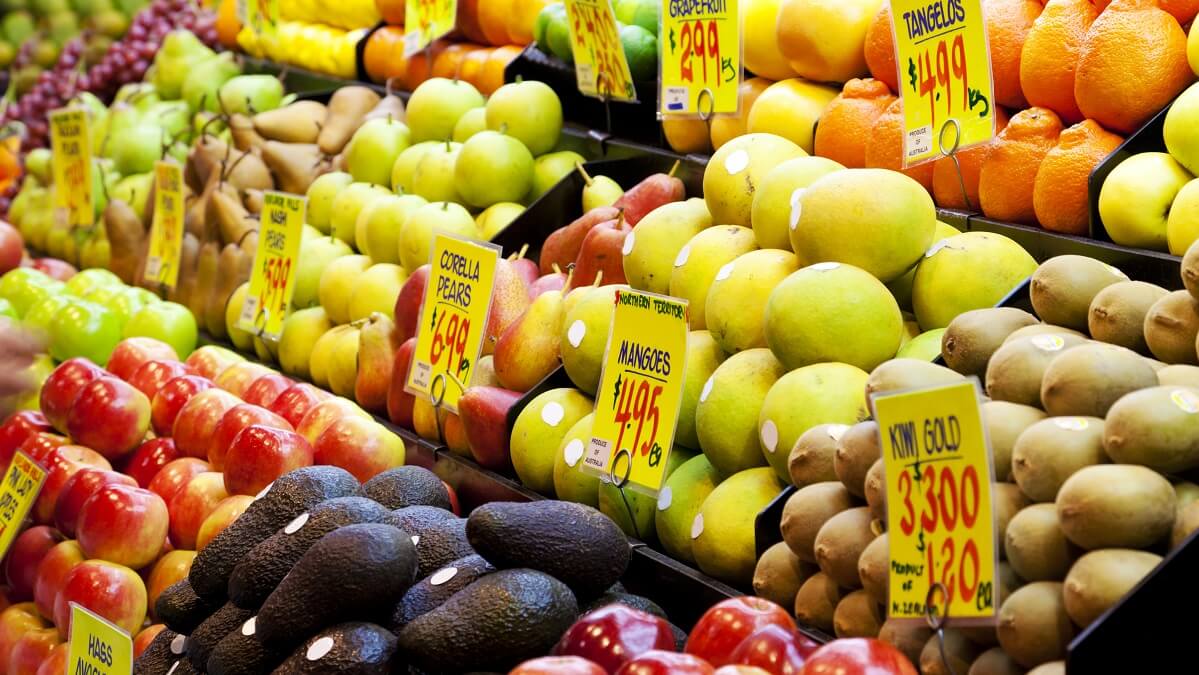If you wince at the thought of going to the supermarket these days, you’re not the only one.
The price of food has been steadily climbing in the past 12 months, with inflation reaching an eye-watering peak of 9.2 per cent in December.
While inflation on food has gone down, according to data from the Australian Bureau of Statistics (ABS) June 2023 inflation report, inflation on things like dairy and bread remain sky high.
And this inflation is being reflected at the check-out.
Here’s how food prices have moved in the past 12 months and what that looks like reflected in supermarket prices.
Where are food prices at for 2023?
At the moment, annual food inflation is sitting at 7.5 per cent, according to the latest figures from the ABS.
Leading the price rise is dairy, which has risen to 15.2 per cent in the past 12 months.
Breads and cereals aren’t far behind with an annual change of 11.2 per cent.
On the lower end, fruits and vegetables increased 1.6 percentage points while meat and seafood rose 3.5 percentage points.
What did food prices look like in 2022?
Inflation figures from the June quarter of 2022 show inflation on food and non-alcoholic beverages sitting at 5.9 per cent – 1.5 percentage points lower than right now.
However, the products of concern at the time were fruit and vegetables and meats and seafoods.
The ABS pinned the increases on “a range of price pressures including supply chain disruptions and increased transport and input costs.”
What does food inflation look like at the check-out?
In order to translate numbers and per cent points into real-life prices we took a look at the products that have been impacted in the last 12 months at two of Australia’s biggest supermarkets.
We used archival catalogues and current pricing to make our comparisons.
Dairy
Food not elsewhere classified (n.e.c.)
The ABS collates food products that have not already been classified in a category as ‘food products n.e.c’ or not elsewhere classified.
Bread and cereal products
Non-alcoholic beverages
Meals out and takeaway foods
Not only is food more expensive at the check-out but you’re not going to get much relief if you choose to eat out either.
June analysis by UBS shows that prices have increased as much as 25 per cent on some items.
For example, the price of a Zinger burger combo at KFC has increased from $8.95 to $10.95 since June 2022 – a hike of 22 per cent.
McDonald’s didn’t fair much better with prices at its Australian stores up 8 per cent since August last year.
Consumers were also shocked last November when $1 frozen drinks at outlets like Hungry Jacks and McDonalds doubled in price to $2 for a large.
Meat and seafoods
Fruit and vegetables
Are food prices going to come down?
If you’re hoping for a radical price drop on your groceries in 2024, you might not want to hold your breath.
Despite inflation lessening on food overall, this doesn’t necessarily mean food is getting cheaper – it’s just getting more expensive more slowly.
And that trend will continue into 2024, according to UBS.
Their Evidence Lab grocery price study tracks 60,000 online prices across Coles and Woolworths.
Their July report forecasts food inflation to be moderate yet remain inflated in the new year.
 © 2020 Australian Broadcasting Corporation. All rights reserved.
© 2020 Australian Broadcasting Corporation. All rights reserved.
ABC Content Disclaimer

